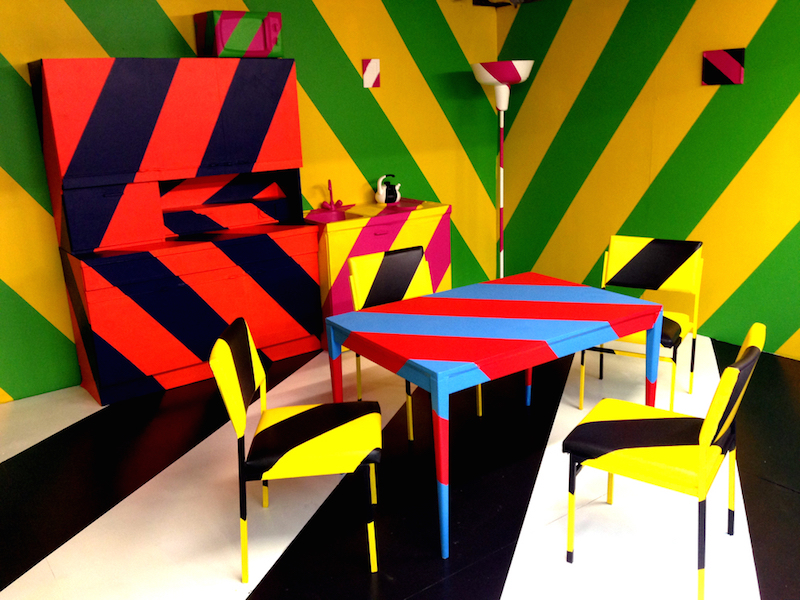
SOUND ID: How Sound is Transformed into an Artefact
The origin of the recordings
Volodymyr Perzhylo was born in 1938 in the Polish city of Oleshychi. In 1946, during Operation Vistula, he and his family were deported to Soviet Ukraine. From that time, he lived in Lviv and worked as a professional musician, composer and conductor. In 1968, as a member of the concert touring troupe of the Lviv Conservatory, he visited Volgograd and Astrakhan regions, where he was astonished by the number of Ukrainian-speaking people. Since then, he got interested in folklore and during his numerous expeditions to this regions, as well as to Poland and Ukraine, he created a rich collection of recordings of the “the people's voice” that can be heart in traditional Ukrainian songs, conversations with representatives of the diaspora and street noise. After Volodymyr Perzhylo's death in 2018, his relatives brought the recordings to the music school in the village of Bobrka, Lviv region.
– For two years I worked in the team of the Academy of Cultural Leadership (a joint project of the Ministry of Culture and the Goethe-Institut), says Viktoriia Danelian. – Ivan Herchakivskyi, the director of the Bobrka music school, attended my course. During one of the Academy modules, he told me that a neighbor brought him a suitcase with cassettes and reels. Unique? Yes! But who knows what to do with it? We agreed with Ivan that, this material would be able to live only if we manage to create a project that will allow studying all these recordings, digitizing them and suggesting interesting ways of their interaction, for example, at the intersection of modern technology and art.
The project was submitted to the competition of the Ukrainian Cultural Foundation and became one of the top-3 winning projects.

You could think, "that's a fluff piece" and just throw it away...
– This story is important in itself, as an example. An example of what we can do with such a “suitcase in the attic”: with what is left from our grandmothers and great-grandmothers and seems to be useless, explains Tetiana Tsvilodub, art historian and curator of the scientific part of the project SOUND iD * Volodymyr Perzhylo Heritage.
– The Perzhylo Suitcase is a vivid example of research, and the recordings themselves are a musical-sound medium, continues Viktoriia. – We consider the project as an opportunity to integrate the important history of the past into modern culture and music. We try, like the Japanese, to use old kimono to create new canvases.
What's in the suitcase
The suitcase holds about 50 audio cassettes, reels and mini-reels with recordings that Volodymyr Perzhylo made in 70-90 years of the last century in the territory “from Lemkivshchyna to Slobozhanshchyna”: in Ukraine, in Volgograd, Astrakhan and Saratov regions of Russia, in Ukrainian villages in the territory Poland. According to the specialists from the national center of folk culture Ivan Honchar Museum, the material is unique as there are no other records of these years from these regions! In addition to magnetic media, there are also books and notes compiled by the researcher.
– I really admire this story of a concerned researcher who traveled far away and tried to preserve fragments of Ukrainian culture, Tatiana says, “in one article he writes that everyone is oriented to the west and is happy to go there with Ukrainian programs. But these “broken branches” are abandoned, not interesting to anyone – neither politically or economically... And he wanted to “go east”, he was interested in these “broken branches”. The chose his way to preserve Ukrainian culture – a field expedition.
– If we consider the materials collected by Volodymyr Perzhylo as data, they are very multi-layered and diverse, says Viktoriia. – In addition to recordings of songs and melodies, we hear live dialogues and random noises. This noise is an incidental story, the addition to the one clearly articulated in words. We try to identify and present these sounds in the archive as additional data. Therefore, our project is called SOUND iD – considering sound as code, as memory. We want to go deeper into the identification of our culture through this code.
_1.jpg)
Residency
How can a wide audience interact with this type of data? How can we interest people who aren't specialists in this field? The project curators are convinced that modern practices of archiving and working with intangible cultural heritage can cope with these tasks.
– To begin with, we will finish digitizing, processing, analysing and cataloguing the material, says Viktoriia. – In August, we will have a residency for media artists and researchers from various humanities (ethnographers, anthropologists, folklorists, historians, linguists, etc.) who are interested in modern archiving and recordkeeping practices and the intangible cultural heritage preserving, and explore the cultural/political /historical contexts that the SoundiD project relates to. To choose the residents, we have created an open call and invite applicants from four countries: Ukraine, Belarus, Slovakia and Poland.
– We will focus on new media (digital technology and art), experiment in the genres of net art, sound art, video art. But we will also work in a theoretical format, for example, an essay, says Tatiana. – The result of the residency will be a publicly accessible online archive and specialists with new experience in the field of new media, folklore, language, history.
The archive and the work of residents will be presented in August 2019 in several cities of Ukraine and in the autumn – abroad. The project team also plans to involve the famous musicians in the work on the archive.
More information about the project: https://soundid.wixsite.com/project/
Please follow on Facebook: https://www.facebook.com/dreamprojects.center/




